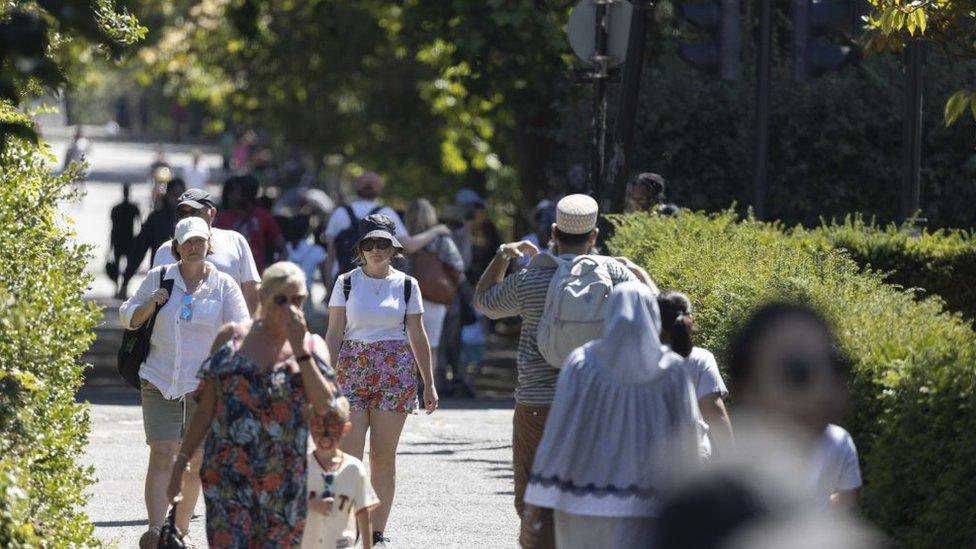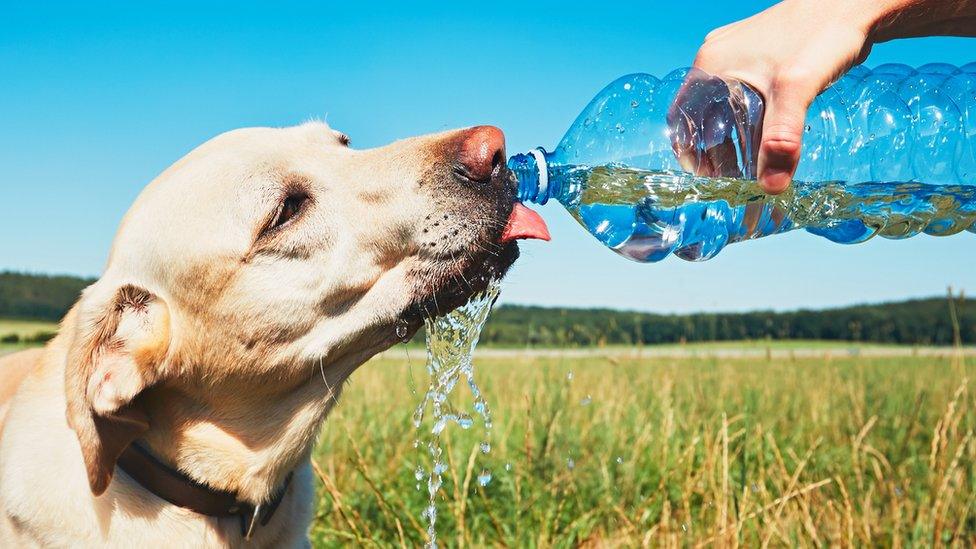All you need to know about the UK's latest heatwave
- Published
- comments
BBC Weather's Simon King has all you need to know about the latest UK heatwave
An amber extreme heat warning comes into effect today, with temperatures expected to hit 35C or more in some parts of the UK over the next four days.
The warning was issued by the Met Office and covers the southern half of England and some parts of eastern Wales. It'll remain in place until Sunday.
The heatwave could cause disruptions for many people, affecting transport which may impact people's travels, working conditions and health.
Temperatures over the next few days aren't expected to reach those the UK experienced last month, where some parts saw temperatures hit a sweltering 40C!
However, the heat in some areas could get close to new records.

Parts of the UK are expected to get very hot over the next few days
"This heatwave, temperatures won't be as high. But the big difference with this current heatwave is that it's much more prolonged," said Matt Taylor, a BBC Weather forecaster.
"We've already seen temperatures above 30C every day this week - Monday, Tuesday and Wednesday - and that will continue until Sunday."
He said temperatures could reach 35C and peak at 37C in some areas between the Midlands and London
In Wales, Cardiff may see temperatures exceeding 30C, while Scotland and Northern Ireland are likely to be cooler with highest temperatures in the mid-20s, the Met Office says.
With all this hot weather talk, trying to understand what the different warnings issued by the Met Office mean can be tricky. However, we've explained it all to help you out. Read on to find out more!
What is a heatwave?

A heatwave describes a prolonged period of unusually hot weather
According to the Met Office, a heatwave is classed as an extended period of hot weather in an area where temperatures are greater than those typically expected at a certain time of year.
In the UK, a heatwave happens when at least three consecutive days of heat are recorded in a particular location, with the maximum temperature each day either reaching or going beyond a specific threshold.
These thresholds differ depending on the region, but an average threshold temperature in the UK is 30C by day and 15C overnight.
Hot weather, especially when prolonged, with warm nights, can have effects on people's health
What are the UK's different heatwave levels?

It's important to stay cool in the hot weather!
In the UK, there are five different heatwave levels. These are -
Level zero: This covers long-term planning which is carried out to reduce the risks and potential harms presented by heatwaves and the impact of climate change. This is more about putting measures in place to prepare for potential incidents in the future.
Level one (Green): This is put in place every year between the 1 June and 15 September. It means people, including social and healthcare services, should be aware of what to do if temperatures do rise and the alert level is raised.
Level two (Yellow): This levels is issues when there is a high chance a temperature threshold will be exceeded within a few days. It's an important stage for social and healthcare services who will be working to make sure they are ready and able to act quickly to reduce potential harms caused from a heatwave.

What do you do to keep cool in hot weather?
Level three (Amber): A level three warning is issued when the Met Office confirms threshold temperatures for one of more regions have been reached for one day and the following night, and the forecast for the next day shows a high likelihood that the threshold temperature will be met again.
This is also an indicator that social and healthcare services should target specific actions at those in high-risk groups.
Level four (Red): This level is reached when a when a prolonged hot spell becomes severe and could end up impacting people both inside and outside of high-risk groups.
- Published31 May 2023

- Published15 July 2022

- Published15 November 2023

